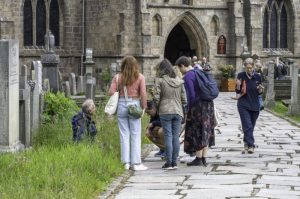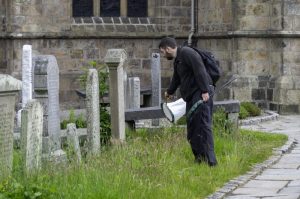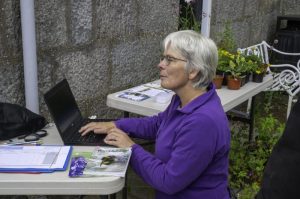How to organise a BioBlitz
‘Bio’ means ‘life’, and ‘Blitz’ means ‘to something quickly and intensively’. Together, they form ‘BioBlitz’. Read to learn how you can organise a BioBlitz in your greenspace. No matter the size!
At a glance
- What is a BioBlitz? A race against time to create a snapshot of the variety of life found in a specific location.
- Who can take part? Everyone
- When and where? Any green space. This can be as small as your garden, as unique as a golf course or as big as a Nature Reserve
- How long will it take? For as long as you’d like
- Why do a BioBlitz? It creates a unique snapshot of the variety of life that can be found in one area. It highlights the importance of biological recording. And it provides an opportunity for beginners and wildlife experts to learn together and share an enthusiasm for nature.
A BioBlitz it’s a great opportunity to bring multiple experts, nature lovers and beginners together to help you identify and record as many species of plant, animals and fungi as possible. These events have become an increasingly popular format for engaging the public in conducting local, intensive biological surveys.
Organising a BioBlitz
Here is an excellent guide which has been designed to support the running of BioBlitzes. But before you jump to reading the guide, continue reading for some local biodiversity advice.
Small scale greenspaces
The location that you are planning to run your BioBlitz, will affect how you organise it. If you would like to do a small scale BioBlitz in a small area such as a garden, allotment or on school grounds, then having multiple experts in the place might not be appropriate. The RSPB has a great Bioblitz page to help with small scale activities for families and schools.
Medium to large scale greenspaces
For slightly large sites such as community gardens or parks, you might want to invite local experts along to help you with identifying.
Who to contact
If you are planning a BioBlitz in a public place, like your community garden, kirkyard or golf course, here are some organisations you could ask to help.
North East Scotland – you can contact these organisations as long as your BioBlitz is within North East Scotland
- North East Scotland Biological Records Centre (NESBReC) – NESBReC will be able to advise on any expert recorders in the area.
- North East Scotland Mammal Network
- Saving Scotland’s Red Squirrels
- Scottish Wildlife Trust – Aberdeen & Aberdeenshire Local Group
- RSPB – Aberdeen & District Local Group
Aberdeen City – you can contact these organisations if your BioBlitz is in Aberdeen City
Aberdeenshire – you can contact these organisations if your BioBlitz is in Aberdeenshire
Useful Resources
Here are a list of great resources created by The Natural History Consortium that you may find useful. You may also find NESBReC’s Species distribution maps helpful. This interactive map can help you see what has been seen near you. Simple enter a species name and it will show you where they have been found recently.
Reporting your findings
NESBReC welcomes receiving data from your BioBlitz, no matter the size. The sightings simply need to be from North East Scotland and should be of species that the recorder can confidently identify. If you aren’t sure of what you’ve seen, you can contact NESBReC with a photo or description.

St Machar’s Cathedral’s BioBlitz, June 2025 © Ian Talboys

Calum Maclure from The James Hutton recording insects at St Machar’s Cathedral’s BioBlitz, June 2025 © Ian Talboys

Aileen Salway from NESBReC checking bat calls recorded on a static bat detector at St Machar’s Cathedral’s BioBlitz, June 2025 © Ian Talboys

Abbie Ferrar
NESBiP Biodiversity Coordinator

